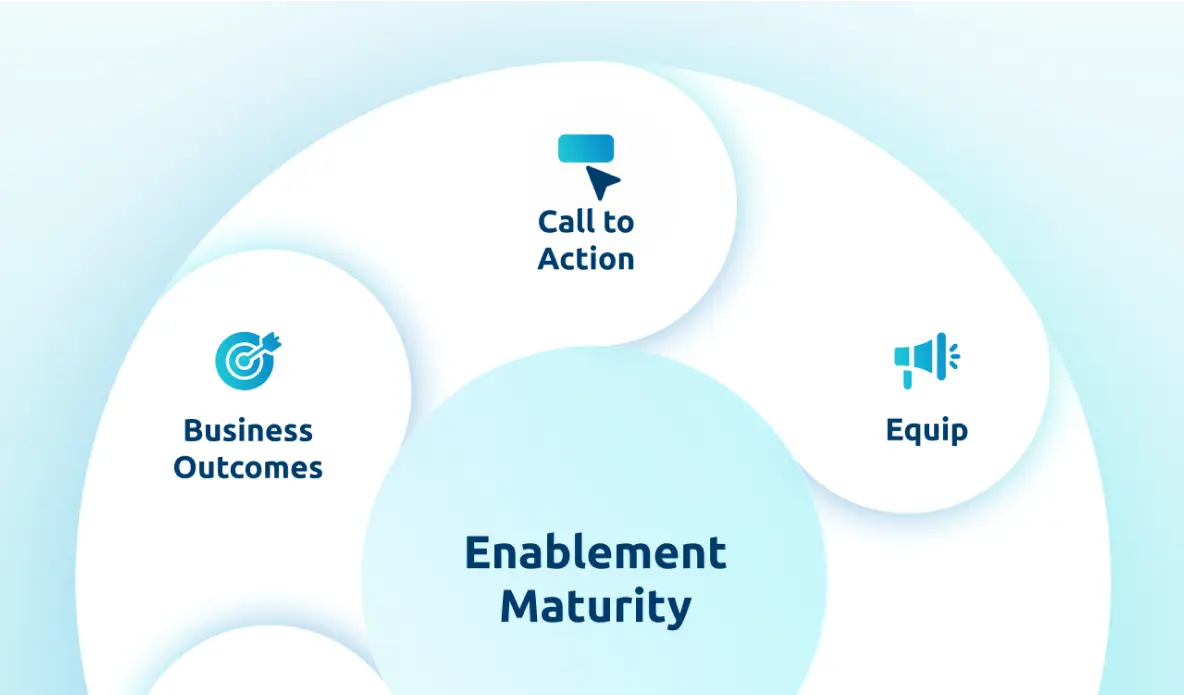A study conducted by Sales Enablement Pro found that 37% of leaders consider increasing revenue while minimizing costs for their employees to be one of their greatest challenges. So how can you maximize the impact of your investments while building your sales tech stack?
Shawnna Sumaoang: Hi, and welcome to the Win Win Podcast. I am your host, Shawnna Sumaoang. Join us as we dive into changing trends in the workplace and how to navigate them successfully.
Here to discuss this topic is Tiffany Jones, the vice president of sales strategy and field operations at HackerOne. Thank you for joining us, Tiffany. I would love for you to tell us a little bit about yourself, your background, and your role.
Tiffany Jones: Thank you for having me. I’m Tiffany Jones, I am at HackerOne. I lead strategy operations and the enablement team at HackerOne. But I’ve been in the space for almost 15 years now. Before HackerOne, I was at DocuSign leading operations there from a hundred million through IPO to well over a billion in revenue.
SS: I am excited to have you here today and you obviously have extensive experience as a leader in go-to-market strategy and operations. Based on that experience, can you tell us about some of the challenges facing go-to-market teams today?
TJ: Yeah, I think one of the biggest challenges that we face from a go-to-market team perspective is how we think about growth in this new economy. Pre-COVID it was a pretty standard path that we were growing quarter over quarter, year over year. COVID had a ton of disruptions to that process. There were some big ups for some companies and some big downs for others. Really in the tech SaaS space, there was a lot of ups. And so right now, from a go-to-market perspective, we’re all just struggling to figure out, like, how do you repeat that year-over-year growth and get back to that same equilibrium.
SS: Absolutely. And tell us about the role of revenue operations in this current landscape. How can RevOps teams help organizations really overcome some of these new challenges that we’re seeing, particularly in the growth sector?
TJ: Yeah, it’s a great question. I think a lot of times the revenue operations part of the organization gets swept under the rug when it comes to thinking about the solutions for this, but, in my experience, we’re front and center, and we play a role in how we think about the teams being organized and how they’re incentivized and building out those structures so that we can get back to that growth level, as well as with the tech stack that’s necessary, and the sales process that goes along with that to amp up the productivity of the sales team so we can get well-oiled machines with the right people in seat in the right roles to achieve those results.
SS: I love that. And I think, as you stated, a key focus for a lot of operations leaders is really driving sales productivity. What are some of the key ways that RevOps can help businesses really optimize sales productivity?
TJ: Yeah, the one that always comes to mind is systems. But there are a number of things for me that really help optimize productivity. There’s the territory design that you end up deploying in your organization. There’s the sales process that you ask each of your individual sellers within your organization to go through. And then there’s the tech staff that they actually operate in for that sales process. Aligning all three of those things that you have, when you say productivity, you’re not just talking about squeezing as many dollars out of an individual person as humanly possible and treating people more like machines every day, but really like how do you optimize their experience as sellers so that you’re asking them to do what’s most beneficial for not only themselves, but the company with the right tools at the right time, like really optimizing their experience? I find it to be really, really important.
SS: Absolutely. And, obviously one of our core audiences is enablement and sales productivity is absolutely top of mind for many enablement leaders as well. In your opinion, how can revenue operations and enablement partner together to improve sales productivity?
TJ: I think it all really starts with the sales process, thinking through what you actually want your sales team to do on a day-to-day basis, like the way that you want them to interact with customers, with other people internally, and with your tools in Sprint Center, and that’s something that the operations and enablement teams need to partner on in order for that to be something that you roll out and the sales team adopts, because you need it to not only work from a theoretical perspective, but you need the backend architecture of those systems to work together to deliver that experience for them to operate in.
I have the benefit in my current role of Managing both an enablement team and operations team. And it’s been amazing this quarter as we put together our key projects for the year to see how those are intertwined from a process go-to-market systems perspective and the sales process that we want to layer on top of that and how those project plans really are on top of each other.
It’s not, A waterfall effect where someone’s working on this and the next team takes it over. They very much are partnered hand in hand to deliver an optimized solution for the sales team.
SS: And you talked a lot about the process component but there’s also a lot of kind of joint shared ownership around the tech stack. I think that’s a really critical area of partnership between enablement and revenue operations. They, I, At least in my experience, are often trying to make sure that they’re building and optimizing that for their go-to-market teams. What are some of the key components from your perspective of an effective tech stack in today’s sales landscape?
TJ: Oh, it’s a difficult question. I feel like the landscape is ever-changing right now. There’s so much consolidation going on that there’s a constant evaluation, at least in my team, from my perspective of: are we using the right tools for the right purposes? I think when we talk about evaluating the tech stack, it’s not all a consolidation game.
I don’t think the end goal is to get to one or two systems that limit the number of clicks or logins they have, but essentially using the best of every product in a way that makes sense from a systems architecture perspective. And I keep saying architecture because I think it’s such an important part of when you have a successful sales system running. So, how are you clicking through to some of your tools? Are you doing it out of a home base or are you asking people to go back into a single sign-on tool and navigate between different tabs at different points in the day? I think you get the enablement aspect, which is here are the best of these tools.
Here’s how I want you to send emails, or to record calls, or to follow up on, and send out material to your end customers. But without the operations team, those can become very siloed events. And you need that operations team in the background, thinking about how they tie all of that information and data together so that the sales team is experiencing a much more optimized way that they’re working with the tools
SS: Absolutely. And this might lead to. Lead into the next question a little bit, but I’d love to understand, what are some of your best practices for evaluating solutions to identify the right ones that also support your overarching go-to-market strategy?
TJ: Yeah, in a perfect world, I would love to do an RFP on everything that we want to do and take a broad swath look at what’s really out there in the market.
It’s rarely what happens. Sometimes we try to pull back and do a little bit of that, but from a best practice perspective, whenever we’re presented with a need for something, I ask two questions. The first one is, do I have an existing tool that solves this and at what level does it solve it? And does that solution meet my sellers where they’re at and what they’re trying to do?
And the second question is so important. It’s very easy to answer the first one. Again, there’s a lot of consolidation going on in the tech stack world for sales, and so you probably have a tool that does whatever your team is asking to go look at right now. But is it meeting the sellers where they’re at?
Is it in the space that they want to do that activity at? Does it fit into that sales process flow appropriately? And I think that key part of the evaluation really helps to build an optimal text stack for everyone to use. And so it might be that they need to do that while they’re sitting inside of their CRM.
And so because that’s where they’re always doing it, it makes sense to have something that either is embedded there or is a tool that the CRM already offers, but perhaps it doesn’t matter. They’re doing it on their phone or one-off or in Slack or Teams. And meeting them where they’re at, I think, is the, is a really important aspect of making sure that you have a toolset that your team is actually using.
SS: Oh, absolutely. And how does an enablement platform like Highspot strategically fit into your sales tech stack?
TJ: For us, it’s a central point of information, right? We’re using it to collect information, distribute information, both internally as well as externally, as well as using the learning module to test that information.
So it’s very much an information hub for us. We use it to again, leak out to other tools that we have or bring things from those tools in as that central point. But we need that, repository is the wrong word because it’s so much more than that, but we need that centralized point.
For a long time, CRM was supposed to be that centralized point. And that was where the industry was really going from a tech perspective. But it’s just not where our salespeople are. The CRM is an afterthought of filling in information. So more and more we’re finding. That pane of glass that’s more like Highspot where the information itself is where our salespeople want to be.
And that’s where we see it as part of our tech stack today.
SS: I love that. How do you measure the impact of your technology investments on your strategic business initiatives?
TJ: The measurement one is always so tricky for me. I don’t have a great answer for that because it’s not as simple when I buy tech stack pieces, there’s always an ROI calculator everyone has and they look at, and they show me all the metrics of the time saved by my sales team and or like I’ll remove this tool and so on overall cheaper costs and all of those are true and they’re a good way to measure.
That’s the ROI that we’re getting and it’s great for talking with my procurement team on. But the reality of the measurement is how much is my team in it. How much are they actually using it? How many logins are they doing? How many edits are they making in the tool? Are they doing it because I’m forcing them into it?
Because I put a mandatory course in? Or are they doing it because it’s where they want to be? And again, a great example is more and more for our culture at HackerOne, Slack is where everyone wants to be. And so I know that if I put things in that medium, that I’ll have a higher use of it. And that’s what I mean when evaluating, like, where people are at.
I’m only going to get the ROI on that tool that I’m buying if someone’s using it. And I know that they’re using it if it’s integrated in Slack because that’s where they’re at every day. And so that usage is really what’s the most important metric for me when thinking about, am I buying, or are you? Do I have usable tools on the system?
SS: Absolutely. And that’s definitely a common thread that we’ve heard when we talk to other operations leaders, for sure. Last question for you, Tiffany, how do you think technology innovations like AI will continue to impact the sales landscape? And do you have any advice for other leaders on how to keep pace with these innovations?
TJ: AI might be the death of me and my role sooner rather than later. It’s interesting. Everyone has a copilot, everyone is using AI, there are some that are quick in front of it, and some are better than others, but it’s just the reality of every tool that we’re using, and 90 percent of the emails that I get on tech stack related things are around how this AI is going to make my team so much smarter, they’re going to spend less time doing research, they’re going to have these really personable emails that are sent out.
The reality is if everyone’s using the same AI tools for the same things, they’re not like envelope emails are going to start to look the same. And it might work for a little bit, but it’s not going to be, it’s not gonna be the long-term benefit we see of AI. And so when I think about AI and how it’s popping up in all of our tool sets, what I’m really focused on is what each tool’s AI does for my sales team and through, again, similar to Tech Stack, like how do I want them using it?
At what point in the sales process is that the. The well-thought-through AI has the best advice or information to help support them. And being really intentional about which AIs they’re using at what point in time. And still pushing them to have that personable impact on what they’re doing.
If it’s sending an email let it write some of that for you. But then don’t absolve them of doing the work of the research and double checking. Because I think that’s where it’s going to start to fail a lot of companies and a lot of leaders where they rely too heavily on it. Insult. I think in the next two years, people are going to have an operations team, like a full-time Co-pilot management role, or analyst role, just to make sure you’re curating those Co-pilots to not conflict with each other and to have the right answers.
I think advice for other leaders outside of maybe getting in front of a role like that open is to be thoughtful about why is your team using that AI component. What value is it giving them at that point in time? And do you have another AI somewhere else that you have to think about?
Is it going to give conflicting information or could someone use them differently? Or two different roles use them and end up in a spot where you’re now, at odds with each other within your own organization. So I do think you have to start to look at those AIs as almost their own tech stack within the tech stack and be really thoughtful about your approach.
SS: Very interesting and amazing advice for our audience. Tiffany, thank you so much for joining us today. I really appreciated it.
TJ: Yeah, this was great. Thank you so much.
SS: To our audience, thank you for listening to this episode of the Win Win Podcast. Be sure to tune in next time for more insights on how you can maximize enablement success with Highspot.



